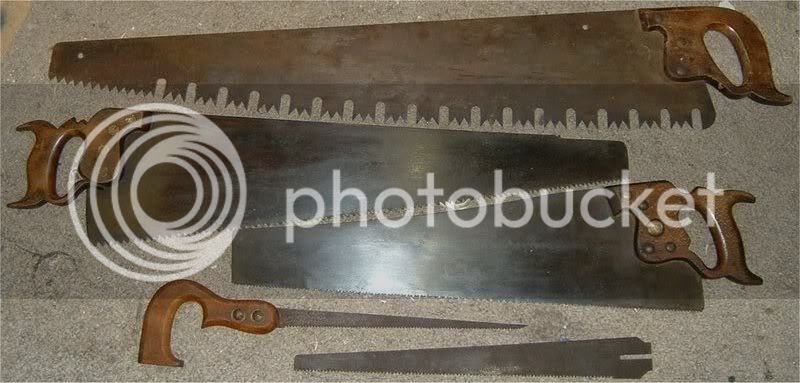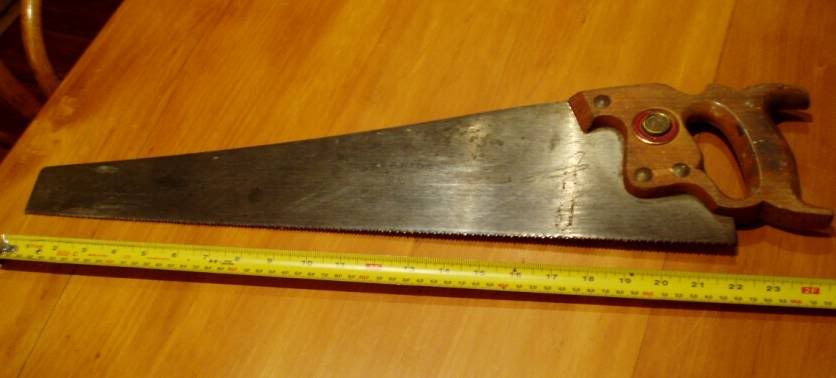Martin,
I have a modest suggestion. That it is worth an email to Hans Brunner to get an opinion from him. Here's why...
I only have one limited source of information, which is an Astragal Press reprint of the 1915 Spear and Jackson catalogue. No other catalogue. And I cannot make out the lettering on the medallions in the catalog. But. The saw in your link cannot be differentiated from S&J's skewback line--based on the level of detail shown in the catalog. I can make out quite well the lightly domed brass saw nuts, the drill pattern of the saw nuts and medallion, the gross features of the triple ring medallion (but not the lettering), the exact shaping of the handle and its let-in to the plate, the shape of the horns, the flats on the handle sides, and the fact that the blade is breasted as well as skew-backed. This all checks.
The slotted side of the screw, if it has one, would be on the side which is facing down in your photo. The smooth domed side showing in your link checks against the catalog.
Derek's saw can be differentiated from any saw in this catalog.
Now my blather doesn't prove anything. Because there is lettering in the medallion of the older saws which would likely either match or differentiate from yours, plus I don't know but what the 1915-look saws continued to be made for many more years. However, if you're interested in buying that saw, I suggest asking Hans what he makes of it, and also is there any etch left. For example, is it a 'Double Mermaid', 'Mermaid', or 'Leapfrog' brand, or is there a saw number which can be made out?
The saw you are pointing to bears enough similarity to the older saws in its gross features, to make it at least worth an inquiry. And perhaps Hans would quickly confirm what everyone is saying--that it's a later saw. But I'd ask.
Wiley


































